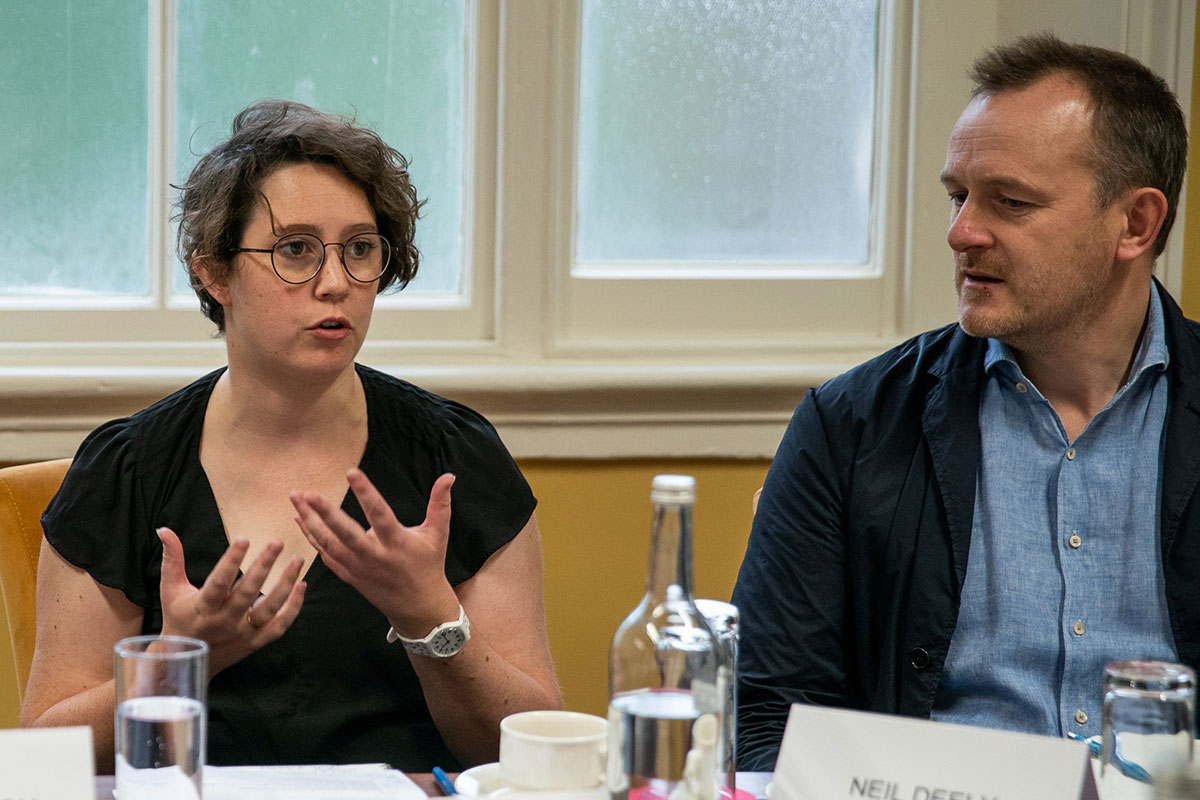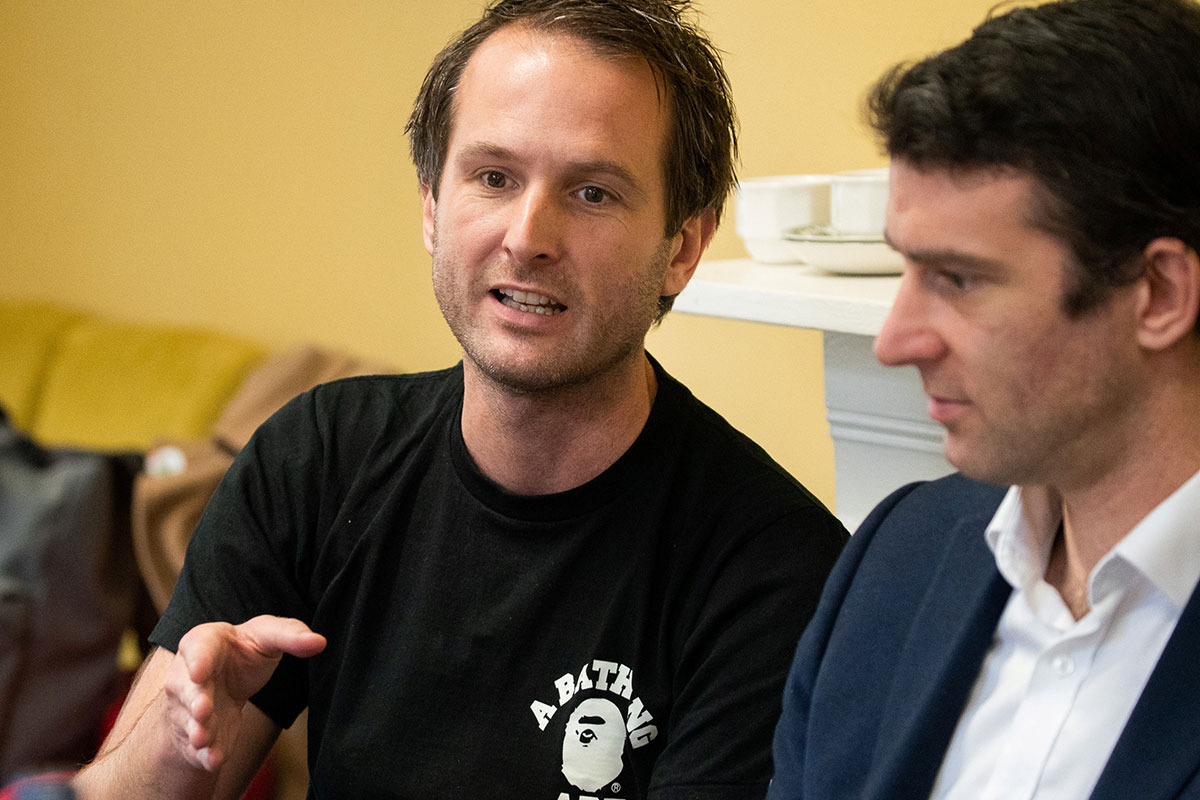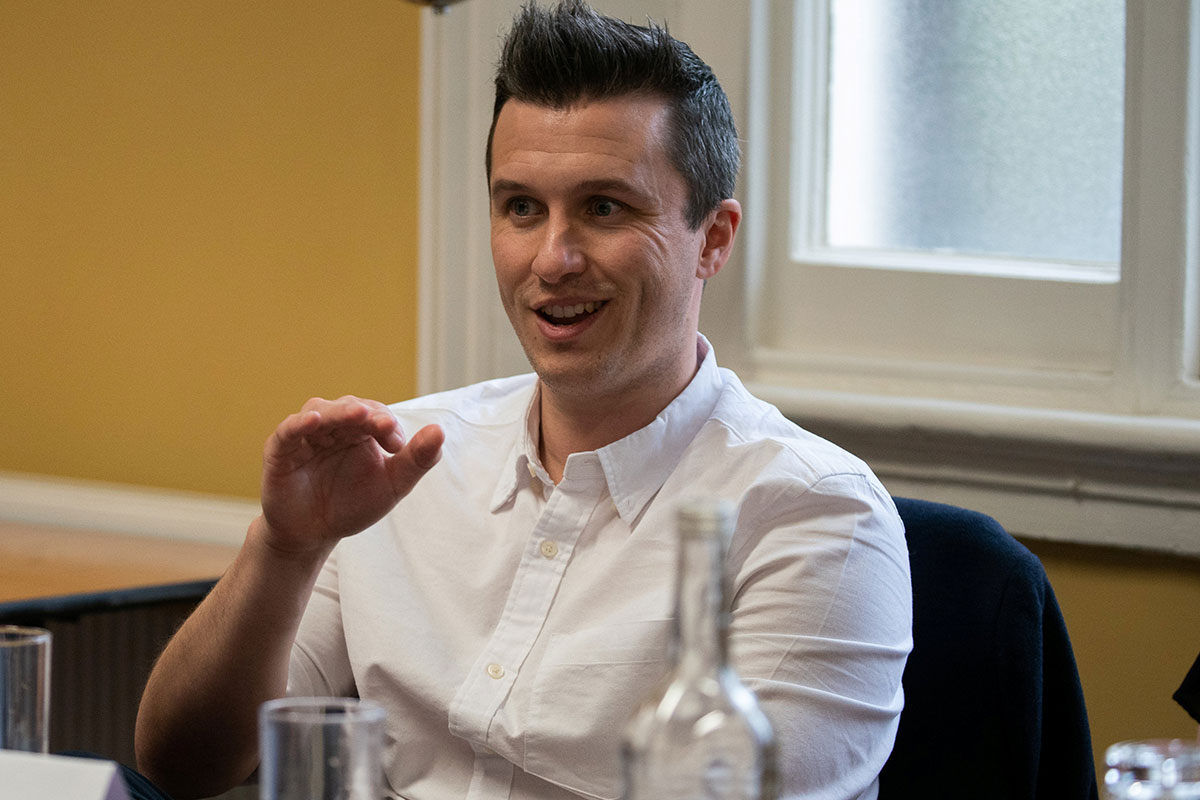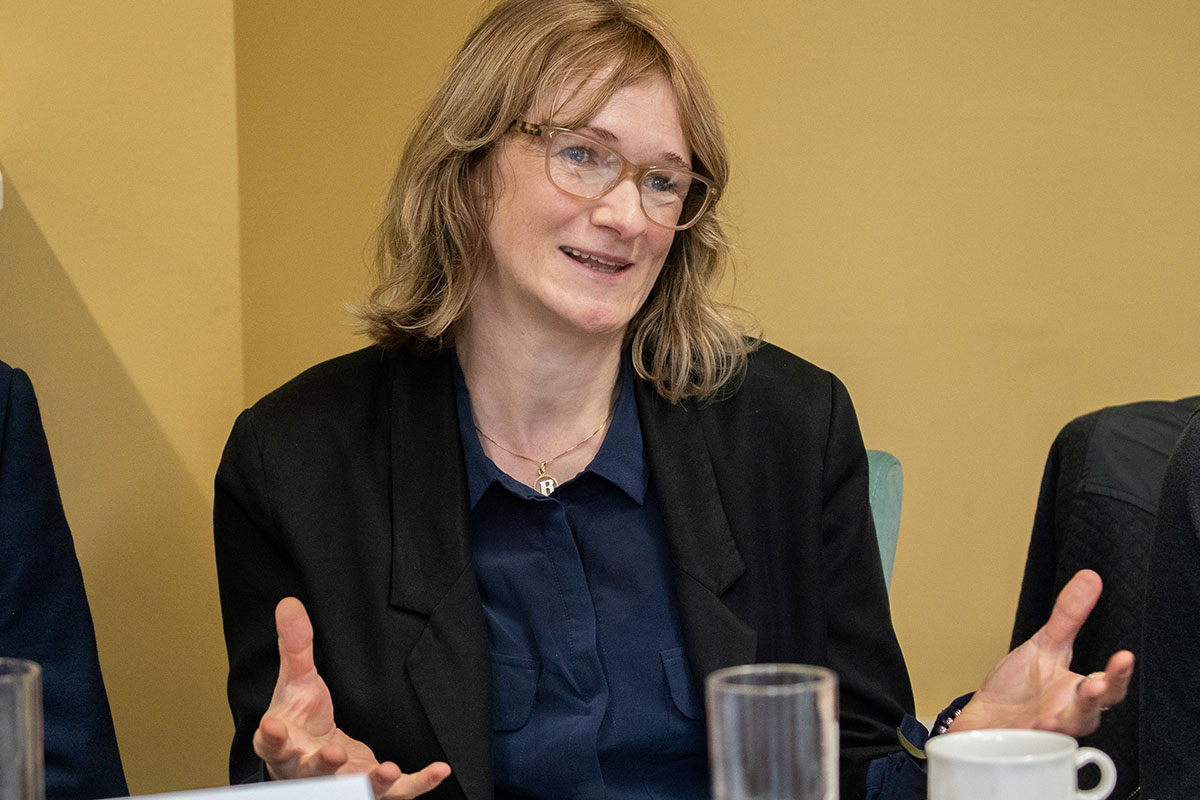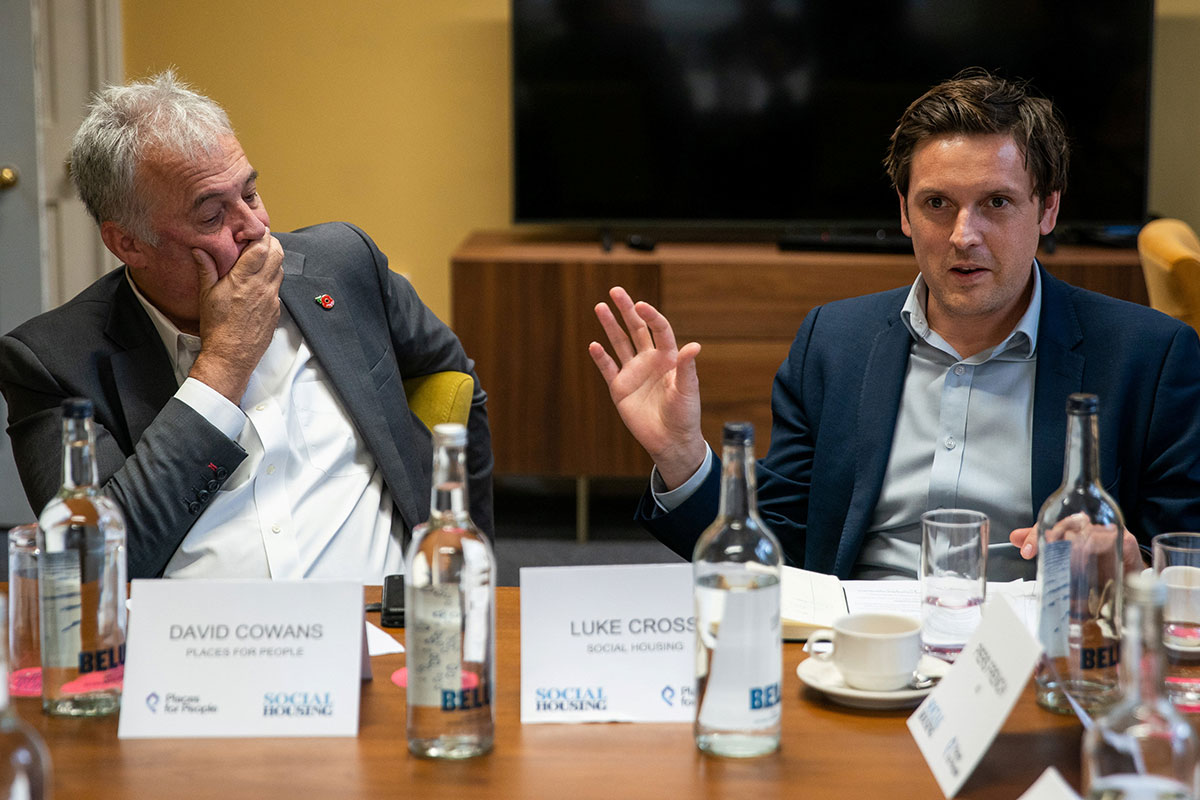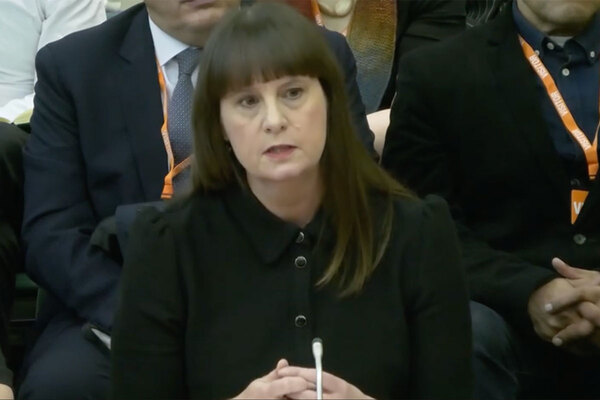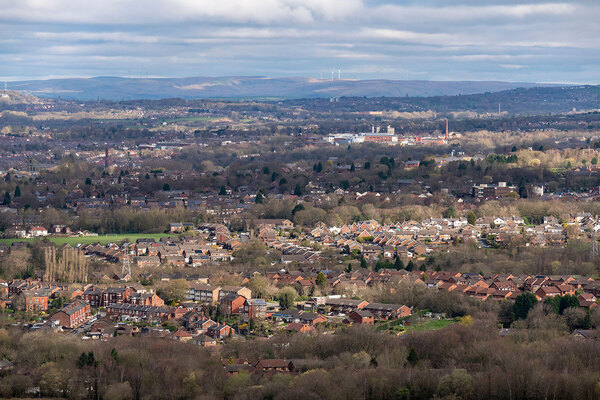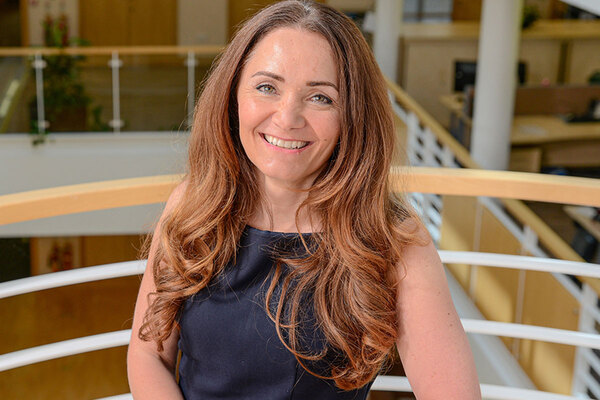How can the sector create the places of the future?
Affordable housing providers must embrace innovation and collaboration today to future-proof the homes and places of tomorrow. Claire Read reports. Photography by SWNS
In association with:

“I’m not interested in the future,” says David Cowans, chief executive of Places for People.
“What I’m bothered about is how we get to it.”
Mr Cowans is speaking at a Social Housing round table, run in association with Places for People at the House of St Barnabas in central London.
“The future is starting now. I want to start preparing for the future by [doing] practical things now, in terms of sustainability, climate change. It’s not only right we should prepare for these issues, it’s morally right.”
The chief executive is responding to the question of how to create a strong and sustainable future for housing provision. Or as Luke Cross, editor of Social Housing and the round table chair, puts it: “This event is about delving into the mechanics of how you actually create homes and places that are fit for the future.”
So how do the other panellists, who gathered in early November, define ‘fit for the future’ in the context of housing?
For Neil Deely, co-founder and partner of architecture firm Metropolitan Workshop, three words immediately spring to mind.
“I’ve written down ‘durable’, ‘resilient’ and ‘collaborative’,” he says, with a glance at the notes he has been making while listening to the opening of the round table.
“Durable and resilient because we have to stop building for the short term and start building for the long term,” he says.
“The short-termism around decision-making in the construction of the buildings we are building – even right now – is breathtaking. It’s all about hitting the bottom line. It’s never a consideration of 20 to 30 to 40 years’ time and what we’ll be left with.”
Thinking also rarely moves beyond organisational boundaries, he argues – hence the suggestion of the need for collaboration. “I think there still is this silo mentality: is it public sector driven, is it private sector driven, is it politically driven. And actually providing we’re doing the right thing, it really does not matter who’s doing it.”
Identifying quite what that right thing is will be a challenge, though, our panel members agree.
This is perhaps best illustrated by considerations around climate change. It is undeniable this issue will need to be a central aspect of making places and homes that are fit for the future, and increasing efforts should be made to reduce the environmental impact of housing.
But, as Becci Taylor, who is a building services engineer and building physicist, and employed as an associate director at Arup, points out, we do not yet have all the answers on how to best direct such efforts – even in an area as specific as keeping homes warm.
“We don’t know how we’re going to heat our homes in the future; we actually don’t know what the right answer is when we’re designing the energy infrastructure for a new housing development,” says Ms Taylor.
“As an engineer, you have to at some point say: ‘I’m going to do this and build it,’ but I’ve never been in this situation before where I haven’t been sure what I’ve chosen to do is right.
“Because until we know what’s going to happen with grid electricity, maybe we’ll decarbonise gas – until we know that stuff, we actually can’t make a definitely correct decision. So we have to be future-flexible.”
Elli Thomas, lead advisor, architecture and built environment team, Design Council and Neil Deely, co-founder and partner, Metropolitan Workshop
Safer homes
At present, the safety agenda is the central priority for the social housing sector.
Michael O’Doherty, regional programme manager for One Public Estate, a national programme to encourage local councils to work with central government, says housing providers are rightly looking at their asset management plans in a different way, and not simply relying on the regulations. But this also means rethinking investment – for example away from the renewable or low-carbon agenda.
“The regulation needs to be resolved as soon as possible, but that then needs to be built into business models going forward.
“We started talking about sustainability and low carbon. And that has to be where this conversation ends up with smarter homes, but there’s so many distractions right now in terms of investment in your existing stock and getting that right, and future-proofing it that way.”
Ms Taylor says the challenge at present is anticipating how to deal with things that are reactions to events.
“We were in the middle of a refurbishment, replacing the cladding because it was the same as Grenfell, each home had a boiler, and we weren’t proposing to change any of the services but the boiler flue going through the facade was suddenly illegal. So this is really complicated. And making sure that the approach is holistic and proportionate to the risk.”
Dominic Campbell, chief executive, FutureGov and Richard Robinson, managing director, Grain Connect
Flexible thinking
Flexibility is perhaps not a quality that has always been associated with the sector, particularly when compared with the technology and digital-centric areas of the economy that have flourished in recent years.
At charity the Design Council, Elli Thomas considers how design can be better applied as a process in the built environment and through placemaking. But in this context it can be tricky to ensure a process that is likely to deliver something fit for the future.
“A good design process has a number of feedback loops in it, and allows you to constantly review, and say, ‘How is this working?’ and go back to the user groups and say, ‘Is this working for you?’” explains Ms Thomas, who is lead advisor in the architecture and built environment team.
“That’s really challenging in the built environment because you’re looking at something which has a very slow, traditional process.”
She also points out that there is rarely a focus on what happens once a project is complete.
“There is a really interesting question about how [we] find ways of building effective post-occupancy feedback loops into prototyping and into a project. Because at the moment I hear every now and then from housing developers: ‘We don’t want to explore new approaches to parking because that’s not what our consumers want, and that’s not what the local policy says.’”
Piers French, director of client, AO
A resident-driven future
It is a comment that touches on what emerges as one of the major themes of the debate: just how big a part should the preferences of residents play in establishing what the future of housing should look like? And it is an area in which some degree of division emerges between the panel members.
For Ben Leonard, understanding what people want is crucial – but that understanding needs to be developed much faster than has been conventional in the sector. Mr Leonard is the chief executive and co-founder of Life Moments, a business that aims to help individuals use their own data to make better choices, including on buying a first home.
“I appreciate there are lots of surveys [in the sector]; people sit down once a quarter and have a survey. We feed it into a report, the report gets reviewed, we sit at the board, we decide it, and there’s a massive lag between what we think people want and what we end up building.
“We need to become more dynamic and more agile in having live insight. And we can do it today, it’s just that very rarely do we use these dynamic engagement tools with our customers when we’re speaking to them. It’s using community and using digital as a way of understanding in real time what people want.”
Mr Cowans, though, presents something of a counterpoint. While he is convinced of the value of data, he is particularly keen on that illustrating clear trends.
Dominic Maxwell, co-founder and director, TellJO
“We know for sure that there are certain strong trends. We know that people are getting older, we know they’re getting frailer, we know that younger people are not as healthy as they were. There’s a lot of trend data that we can work on, where it gives you a lot more certainty than any survey ever would. So I think that’s where I’m focused on – that trend data. What are the obvious directions and how do you get ahead of them?”
The reputed words of carmaker Henry Ford – “If I had asked people what they wanted, they would have said faster horses” – are also on his mind.
He says: “If you look at the whole history of innovation, it’s often been to provide something people didn’t know they needed, or didn’t know was available, or was constructed in a way that they then found it easy to use.
“So we almost have to leap ahead, and this is the tough bit – you have to be first a lot, and you risk failure being first a lot. So we [Places for People] have been first a lot in all sorts of ways, and I’m trying to work out the extent to which it makes sense to be first a lot.”
Becci Taylor, associate director, Arup
Solving the financial equation
Financially, that is a particularly difficult calculation to make.
Mr Deely speaks of housing’s “financial equation” simply not stacking up at present: “The system we have at the moment – which delivers 200,000 homes just about a year, we need 300,000 – does not deliver the outcomes that are fit for the future. Rather than using the same old machine to give us the same old answers, my view is we need to develop a new equation that gives us choices that we currently don’t have, or gives the consumer choices that they currently don’t have.”
He points to the specific example of finding an alternative to high-carbon solutions. “There isn’t one, because we can’t afford high thermal mass internal envelopes, we can’t afford ground source heat pumps or whatever. It has to be the highest cost in terms of carbon and energy, the lowest cost in terms of capital.”
So how do you create a market for more sustainable solutions that guarantee a strong future?
Piers French’s thoughts immediately head in the direction of the consumer. As director of client at online electricals store AO, that is perhaps inevitable. “Because we’re a large retailer, we have a certain way of approaching things, which is really consumer-first,” he explains.
“If you actually were able to capture the environmental cost to build [something], and put that as surfaced information for the consumer to decide, they would price it in the market,” he suggests. “I think providing consumer information really is the key.”
Richard Robinson, managing director, Grain Connect
Political vision: looking for leadership
The thoughts of some others around the table, meanwhile, turn towards Westminster.
Among them is Mr O’Doherty, who says: “We need a bit of ambition and vision, and I’m afraid we do need a government drive to see where we want to get to; to shape the policy framework to try to develop markets and incentivise certain products, technologies and innovations.”
Of course, it’s not the case that the only political leadership resides in London.
Local councils up and down the country are clearly key players in the provision of housing, and often portrayed as important creators of place.
Ms Thomas says her experience is that local authorities have the appetite to proactively think about infrastructure-led development and placemaking with the future in mind. The challenge is “a huge lack of resource and leadership to do it”.
David Cowans, chief executive, Places for People and Luke Cross, chair and editor, Social Housing
It is a point that Dominic Campbell, chief executive of FutureGov, quickly echoes.
His company, which he describes as a change consultancy, mostly focuses on local and central government but also operates across social housing and health. His observation is that “there are so few inspiring local leaders who are capable of imagining a coherent, three-dimensional vision
for change and implementation”.
He argues therefore that we must embrace local leadership wherever we find it.
“For me, it’s interesting to go place by place and to be quite agonistic about who takes that lead. Generally local authorities think they are almost the Apple of place, like they’re the hardware, the software, the experience, they can control everything, which of course they can’t.
“So it’s quite hard to get them to step off that pedestal and say: ‘Your local health authority or your housing provider are actually really good at this stuff. Let them lead and you follow.’”
Michael O’Doherty, regional programme manager, One Public Estate
In some instances, our panellists agree, those local leaders may in fact be from the private sector.
Dominic Maxwell is the co-founder and director of TellJO, a digital tool designed to help landlords identify and support vulnerable residents.
“TellJO’s born out of my abject frustration of local government not doing stuff,” he tells his fellow panellists. “And [I decided] the only way it’s going to change is if I went and did it myself. I think it’s that kind of leadership, that mindset [we need] – I’m going to show you how to do it, because nothing’s happening.”
Investing in the future
For Richard Robinson, managing director of Grain Connect – a fibre broadband provider that works with social housing developers – there is definitely investor interest in companies seeking to improve the future of housing.
“Grain has just gone through a funding round, and probably over the past 12 months we’ve had 30 different investment houses trying to put money in. So the reality, from my position of what I’ve just witnessed, is that investors are looking for ways to improve the future of housing.”
When considering examples of what she feels is good recent placemaking, the Design Council’s Ms Thomas says that private sector input is an element.
She points to British Land in Canada Water – a mixed-use scheme in London where residential is a key theme – and the Kirkstall Forge development in Leeds. “They’re the kind of examples where it is the private sector leveraging public sector organisations to drive it forward,” says Ms Thomas.
Which brings the debate back to one of the key words suggested as defining places and homes that are fit for the future: collaboration.
“Why don’t we promote the idea we should just focus on outcomes, and it doesn’t matter who does it as long as it’s people who can do it?” asks Mr Cowans. “The next question is how do you then create a relationship, put together a set of nexus players, to actually get the coalition of the willing together.”
Because, he says, the idea that the future is some far off place down the road is a mistaken one.
“My experience is that industries don’t actually deal with things until they have to. I think we have to now.”
Attendees
Dominic Campbell
Chief executive, FutureGov
David Cowans
Chief executive, Places for People
Luke Cross
Chair and editor, Social Housing
Neil Deely
Co-founder and partner, Metropolitan Workshop
Piers French
Director of client, AO
Ben Leonard
Chief executive and co-founder, Life Moments
Dominic Maxwell
Co-founder and director, TellJO
Michael O’Doherty
Regional programme manager, One Public Estate
Richard Robinson
Managing director, Grain Connect
Becci Taylor
Associate director, Arup
Elli Thomas
Lead advisor, architecture and built environment team, Design Council
RELATED



